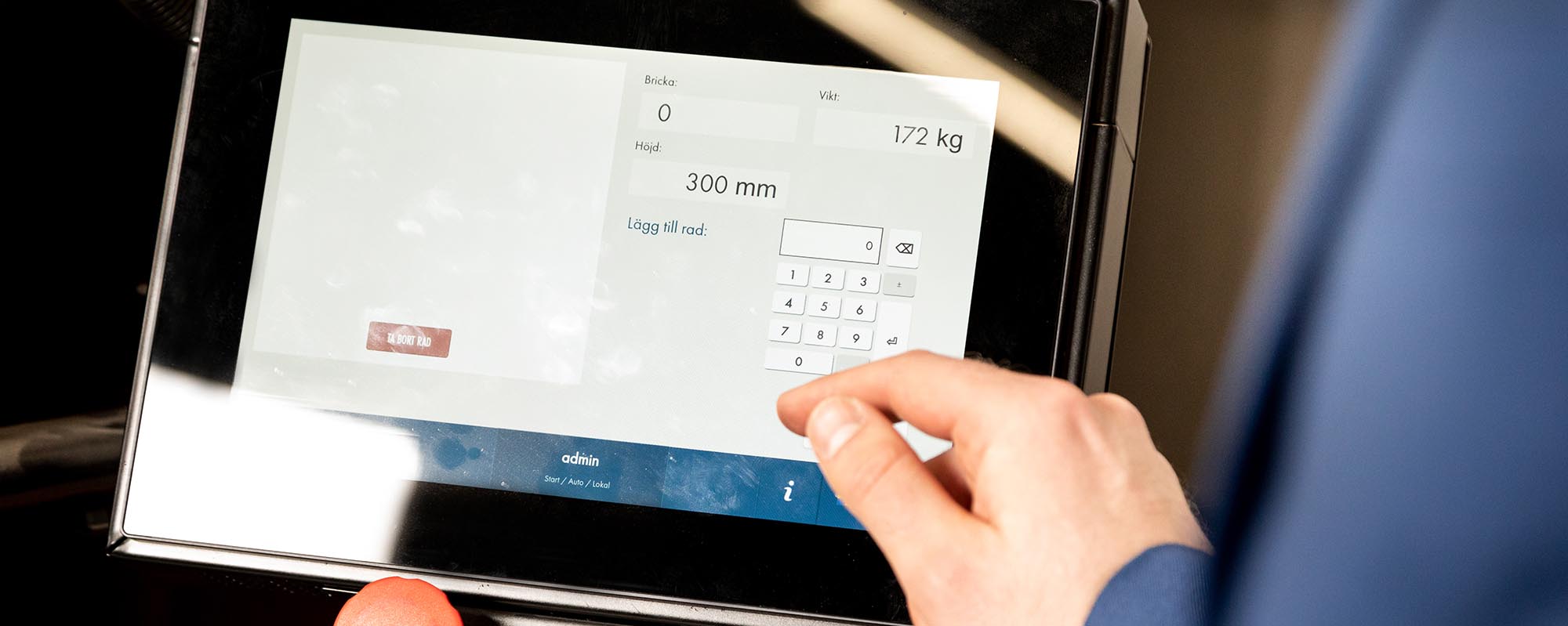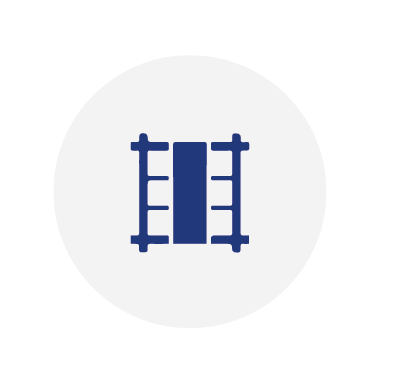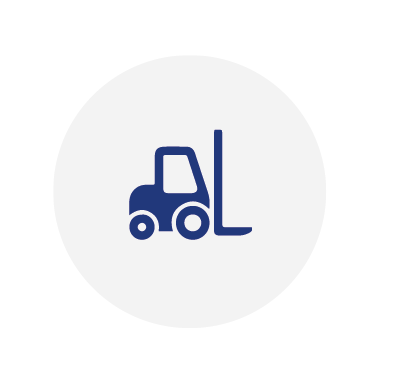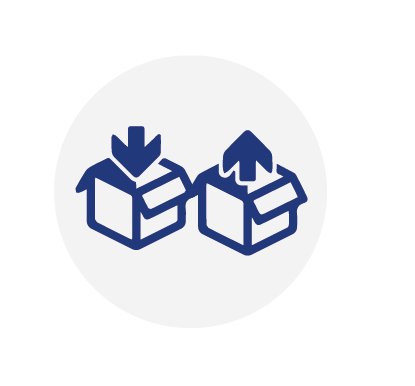
Custom software for best control and function
Working in conjunction with Weland Software, Weland Solutions has developed custom WMS system Compact Store, which controls Compact vertical storage lifts in the most efficient way. Compact Store is modular, which makes it easy to connect new functions as needs arise, regardless of the size or complexity of the warehouse. The system, which has been in operation since 1999, is continually being developed in collaboration with our customers. In 2023, Compact Store Flow was released.
For cases where a Compact vertical storage lift is to be directly connected to a company’s own business or warehouse system, we have developed a communication software tool – Compact Talk. Compact Talk enables us to establish communication between Compact vertical storage lifts and all known ERP systems on the market.
Compact Store
Efficient warehouse management with Compact Store
As soon as an order is received by your company and added to the business system (ERP), that information is transferred to Compact Store at the vertical storage lift. The operator can then start the order immediately and begin picking. Compact Store instantly sends one or more load trays containing the correct items to the handling opening. The operator can pick items from the load tray, calmly and methodically, at a comfortable working height. Each item picked is acknowledged using a scanner, foot pedal, or button push before being placed or packed on a work table, truck, or rack located next to the vertical storage lift, and is then delivered externally or moved on internally within the company. Compact Store automatically keeps a check on stock balances as they change when an item is acknowledged.
Our own scalable warehouse management system
In order to streamline picking using any of our picking solutions, your vertical storage lift needs to be controlled by our Compact Store software. Compact Store is our own scalable control system that is suitable for use by both small businesses looking to have full control over their stock balances and work flows, and operators of larger warehouses that want to pick and pack orders in the fastest and most efficient way possible. Of course, Compact Store is able to communicate with your business system, no matter which one you use. There are several different levels of Compact Store. The system can be expanded as you make changes or grow your business.
COMPACT STORE
> Easy to install
> Easy to configure
> Easy to grow with
> Easy to start
> Easy to use
Stand
Alone
Stand Alone is suitable for businesses that do not have a particularly intensive picking operation but want a stock room/warehouse that is kept neat and tidy. All items are stored protected from dirt and unauthorized access inside the vertical storage lift. In this version, Compact Store is operated manually on a local computer without connect to a business system. The operator manually creates put in and pick lists – if a bar code is available, this can be done easily using a scanner.
Basic
Solutions
With Basic Solutions, you get a more intensive picking speed and more controlled picking. Compared with traditional stock/warehouse management tools, you can easily increase pick efficiency by over 150%. Compact Store Basic Solutions is connected directly to your business system (ERP), meaning that orders can be sent directly between the systems. Put-aways and take-outs, as well as stock control is done easily using the order overview. A label printer ensures that all items are marked with the correct information. It is common to acknowledge using a scanner to ensure a high level of security in picking.
Picking
Solutions
Picking Solutions is the system to use where output is subject to stringent demands in instances were you want to be able to start multiple orders at the same time. The algorithms in Compact Store analyze order lines and calculate the most efficient co-pick from each tray. To ensure that the right item is picked from the tray, we offer a number of picking tools, e.g. pick display, laser pointer, or LED bar, all tailored to your needs. By adding Put-to-Light or Put-to-Screen at pick-to-station, you maximize picking speed and minimize the risk of picking errors.
Custom
Solutions
Custom Solutions is a completely bespoke solution where we work together to tailor the system solution based on your unique warehouse operation. Custom Solutions can encompass the entire warehouse and also manage picking stations such as shelf stations and pallet stations outside lifts. In such instances, an iPad or tablet computer with a simplified menu system is used to control which picks or input deliveries are made.
Compact Store System functions
| COMPACT STORE | STAND ALONE | BASIC SOLUTIONS | PICKING SOLUTIONS | CUSTOM SOLUTIONS |
|---|---|---|---|---|
| Communication with one or more Compact Lift/ Twin/ Double | ||||
| Manage different users and access rights | ||||
| Create and maintain manual orders | ||||
| Create order as an order template | ||||
| Manual storage, removal, and inventory | ||||
| Create inventory assignments and ongoing stock control | ||||
| Express order | ||||
| Choice of floating or fixed places | ||||
| Manage item register | ||||
| Automatic place selection | ||||
| Manage storage sizes in vertical storage lifts | ||||
| Connect items to storage sizes | ||||
| Run pick display, LED bar , laser pointer | ||||
| Manage tray layout | ||||
| Control of item against permitted storage location/max quantity | ||||
| Item data import | ||||
| Use scanner for item search | ||||
| Retrieve tray information from lift | ||||
| Show lift status | ||||
| Manage file import and export between ERP and Compact Store | ||||
| Split several vertical storage lifts across different picking zones | ||||
| Lock item | ||||
| Alternative stock control range depending on storage location | ||||
| Discrepancy list | ||||
| Acknowledge with scanner | ||||
| Print out of labels containing information, EAN code, and QR code | ||||
| Co-pick of orders | ||||
| Multi-pick, i.e. Start several orders at the same time | ||||
| Compact Similarity in order to maximize the number of pick hits on the tray | ||||
| Manage Put-to-Screen (additional hardware required) | ||||
| Manage Put-to-Light (additional hardware required) | ||||
| Scanner acknowledgment of parcel and pick locations and pick-to locations | ||||
| Enables control of external storage locations. | ||||
| Storage locations outside lift | ||||
| Division of warehouse into units/zones | ||||
| Manage high frequency goods in lift zone | ||||
| Management of item to maximum quantity per permitted zone | ||||
| Temporary storage locations | ||||
| Buffer locations | ||||
| Storage location groups such as pallet racks, shelf racks, and layout areas | ||||
| Replenishment points for vertical storage lift from other storage | ||||
| Storage location checklist | ||||
| Lock storage locations | ||||
Optional: | ||||
| Card or tag for logging into T50 and Compact Store. Additional hardware and software required | ||||
Easy to get started and easy to use
The menu structure in Compact Store is identical in all dialog boxes, which simplifies things
for the operator. The user-friendly interface means that settings are quick
to program. It’s also easy to create users, licenses, scanner system logs,
design custom picking labels, etc. as and when you require them. Compact Store has
grouped its various functions under the following icons:

CREATE LIFT ENVIRONMENT
Functions that set up the vertical storage lift and trays that are to receive stock. From here, you can do the following:
- Prepare content virtually before the vertical storage lift is in place
- Create and fit out trays
- Create and copy tray storage locations
- Combine vertical storage lifts and split the warehouse into several different zones
- Equip the vertical storage lift with picking tools
- Check status – current tasks and storage locations
- Conduct an inventory of the vertical storage lift
- Request tray
- Manage vertical storage lift maintenance

SET UP WAREHOUSE
Functions concerning storage space on the tray and the products it contains. The more accurate the preparation, the faster the migration. From here, you can do the following:
- Prepare the warehouse virtually before the vertical storage lift is in place
- Build vertical storage lift storage locations and item locations
- Furnish trays based on size and quantity of each product
- Select type of storage location – batch, fixed, or floating
- Determine the location of items in different zones based on size and pick frequency
- Create an overview of all storage locations in the system
- Reposition products
- Lock storage location

PROCESS ORDERS
Order-related functions. Create custom templates to strengthen your brand.
From here, you can do the following:
- Manage daily order processing
- Prioritize orders
- Show/start/cancel orders
- Make put-aways via the ERP system
- Easily import item files via drag and drop
- Manually add put-aways and take-outs
- Produce order history

FIND ITEMS
Functions that concern the management of items that are inside the vertical storage lift. From here, you can do the following:
- Create/condition items – size, weight, pack size
- Import items – from business system/Excel file
- Create item descriptions
- Put-away
- Take-out
- Show/search item
- Change, delete, lock item
- Inventory item

PUT-AWAY/TAKE-OUT
Manual put-aways and take-outs.
Compact Talk
Compact Talk enables communication between the vertical storage lift and the business system
Using Compact Talk, you can connect a vertical storage lift directly to your business or stock system (ERP). Compact Talk is Weland Solutions’ own communications software that translates information so that the lift works with all known ERPs on the market.
Compact Talk also controls our Pick Display, which means that you can easily adapt the layout of the screen display. You can change the name of headings, add and delete fields, change order and text size, giving you a display that clearly shows the information that is relevant to your operators in their work.
Beginning with Compact Talk version 3.1, we have also added functionality for robot integration and major automation solutions in the form of stop codes. We are the first to offer an extended event management function, which means that a control system can track the progress of a tray all the way – from stock to opening and back to stock again. Stop codes mean that the superordinate system continually has access to information about the complete status of the machine and cell, both during operation and during operational stoppages.

